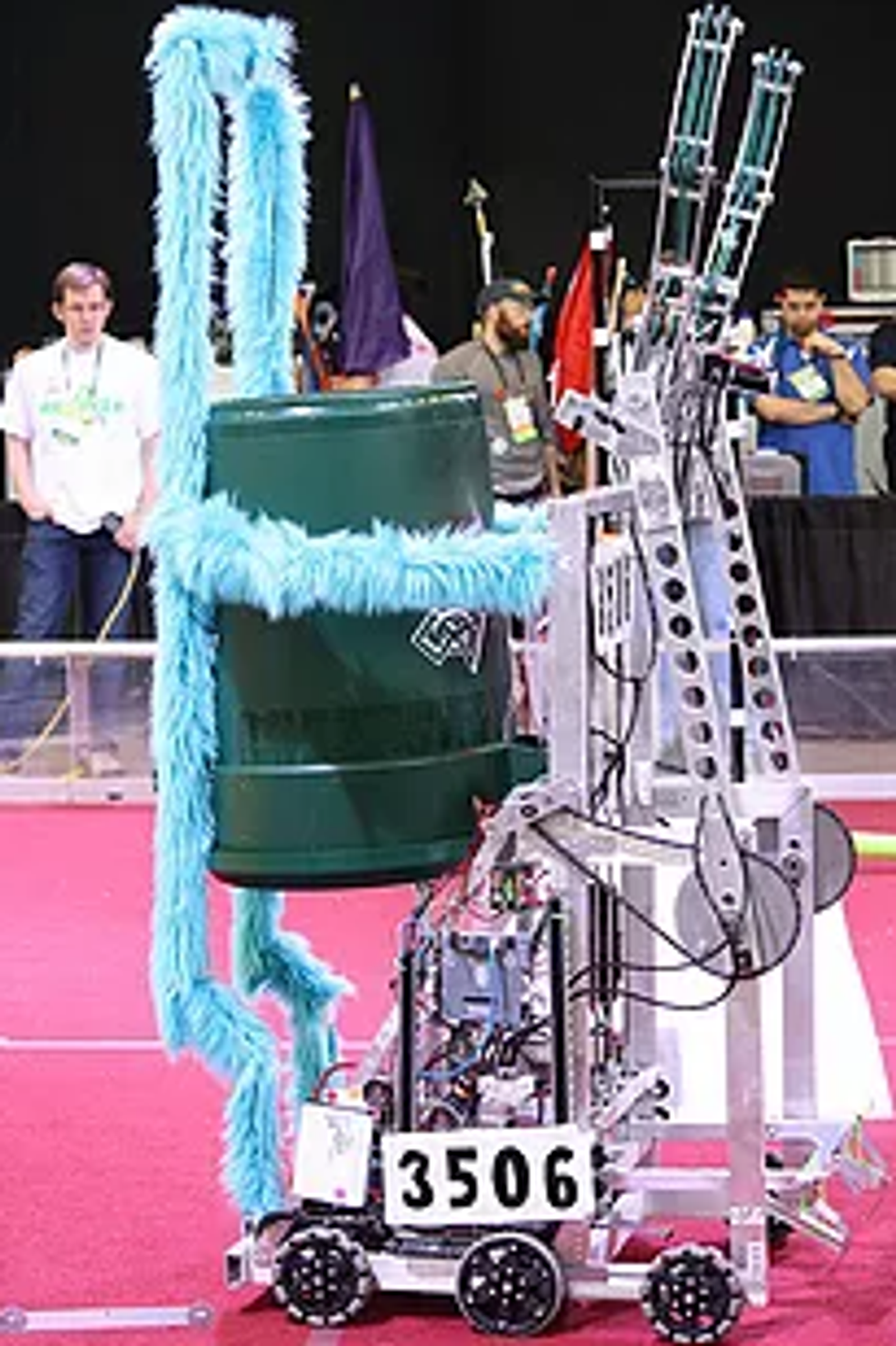From The Opportunities To The Community It Gave Me, Here's Why 9 Years Of Robotics Changed My Life
Here's why high school robotics is the 'Sport of the Mind.'
2 minutes and 30 seconds. 42,000 cheering fans. 6 robots. 2 alliances. 1 winner. That's what it's like to compete on the field at the FIRST Robotics World Championships.
Ever since I powered on my NXT robot in fourth grade, I knew participating in "For Inspiration and Recognition of Science and Technology" (FIRST) robotics was something I wanted to take to the next level. Over the years, robotics continued to be a central part of my life, helping me discover myself and grow personally.
High school robotics (otherwise known as FRC) is truly unlike anything like you've ever heard of. Imagine 30+ students from different schools coming together to build a 150-pound robot that has to shoot frisbees or play soccer. That means that we have to design, prototype, build, and program an entire robot from scratch in SIX weeks. Once the "game" is released and we read every word of a 100+ page manual, build season begins and we say goodbye to our social lives for the next six weeks, given that most of us averaged around 20+ hours in the lab per week.

So what does a FIRST robotics competition look like? A regional tournament usually involves around 60 teams that are vying for a spot in the World Championships. After playing ~12 qualification matches each, we are ranked from top to bottom, and then have to pick alliances for the Elimination Rounds. If this is sounding like a sporting event, you are correct. Each of the top 8 teams picks two teams to join their alliance and then the Playoffs commence. If you aren't one of the 24 teams picked, you pack up and go home.
In order to not be one of those teams packing up, we usually stay up until 4 a.m. (if we get any sleep) to see what we can do to win and to go over out scouting data for all 59+ other teams. To be successful, we have six people watching the field at once to document everything each robot does so that we can see which robots we want on our alliance. This data is then compiled so we can run things like Monte Carlo simulations to rank teams in our own interests.
What sets FIRST apart from any other high school extra-curricular activity is the practical application and emphasis it has on teamwork and collaboration. In activities like Science Olympiad and DECA, you are only trying to make your own team win. With robotics, I always found my team doing everything we could to help other teams locally and internationally. We invited other teams to our lab, Skype-called teams hours away, and even corresponded over email with a team from Istanbul, Turkey. At competitions, we even let other teams borrow tools and spent hours in other teams' pits trying to fix their mechanisms.
FIRST robotics teaches you things that you'd never learn in any high school environment. You can learn how to use a lathe, design something in SolidWorks, or how to run full-stack ROS. Most importantly, FIRST teaches you things that go beyond STEM. It teaches you soft skills that are transferable to any industry. We had to fundraise over $60K a year to fund our robot expenses and competition fees. Since freshman year of high school, I was cold-calling and emailing companies like Qualcomm and nVidia to sponsor our team.
Robotics also helped me build character by giving me opportunities to spread STEM to populations who might not have access to it. I've had the chance to demo our robot at an all-girls Microsoft Summer Camp, plan and run a coding camp for refugee children, and teach an introductory robotics lesson to elementary school students.
FIRST is an international community like no other, it is one where we promote gracious professionalism and the spirit of friendly competition. After qualifying for the World Championships thrice and competing against teams from as far as Israel and China, it made me realize that I love working with people from different cultures and backgrounds, and I want a career where I can work with diverse populations.
To this day, the biggest feelings of happiness and euphoria I have ever felt was when my team won the North Carolina District Championship in 2016 and 2017. Also a BIG shout-out to my teams The Zebracorns and YETI Robotics for giving me so many opportunities and believing in me.































Genetically Modification Could Save Future Babies From Illnesses, But Also Pose New Issues
Now imagine if people can breed smarter, stronger, and (sociologically) more attractive kids? The problem is that the possibilities are truly endless, and this experience has insidious implications.
You read that right. He Jiankui, a renowned scientist from China, has created the first two human genetically modified babies. The technology is called CRISPR/Cas9, and it's the same tech that we use to modify plants like soy.
My first question was "are people just allowed to do that?" Well, depends on what country you live in. In the US for example, there are at the least minimal regulations based on ethics. However, this hasn't stalled us from innovating at a startling pace. America only lagged two years behind China for the first genetic modifications to a human embryo. Since it is seen as far more controversial in Western nations, we have seen the slight delay of creating genetically modified babies. But make no mistake, it is only a lag. Not a prevention.
Many critics of this innovation echo the sentiment of Eric Topol, a geneticist at the Scripps Research Institute, who said, "We're talking about changing every cell of the human body's 37 trillion cells. That's never been done before. And it was done in a rogue fashion.''
But the changing of our genetics begs a bigger question than the way it was accomplished.
Should we be able to alter our genes?
People inside and outside the scientific community are saying no, and for many different reasons. The first deals with whether or not we should diagnose embryos with genetic diseases and cure them before the infant is born, and then use genetic modification as a direct solution. For example, He was altering the embryos in order to prevent the HIV that they would have from their fathers. However, there are already scientific methods that do not involve genetic modification, such as "washing" the sperm of the HIV. The truth is, once this technology hits the market, we can't currently regulate which method people will choose. And CRISPR kits are already inexpensive online, rounding up to about $1,000. There's a lack of legal understanding, in the US and abroad, on whether or not these experimentations are legal. This compounds the problem when the effects of this innovation can be massive and devastating.
The next controversy deals with "designer babies." This is a concept developed from the imagination of what gene editing could bring, with a terrifyingly familiar tune of eugenics. Will people begin crafting a "superior race"? As one can imagine, this will only be accessible to the wealthy one-percenters who already have paramount advantages over the rest of the population. Now imagine if people can breed smarter, stronger, and (sociologically) more attractive kids? The problem is that the possibilities are truly endless, and this experience has insidious implications.